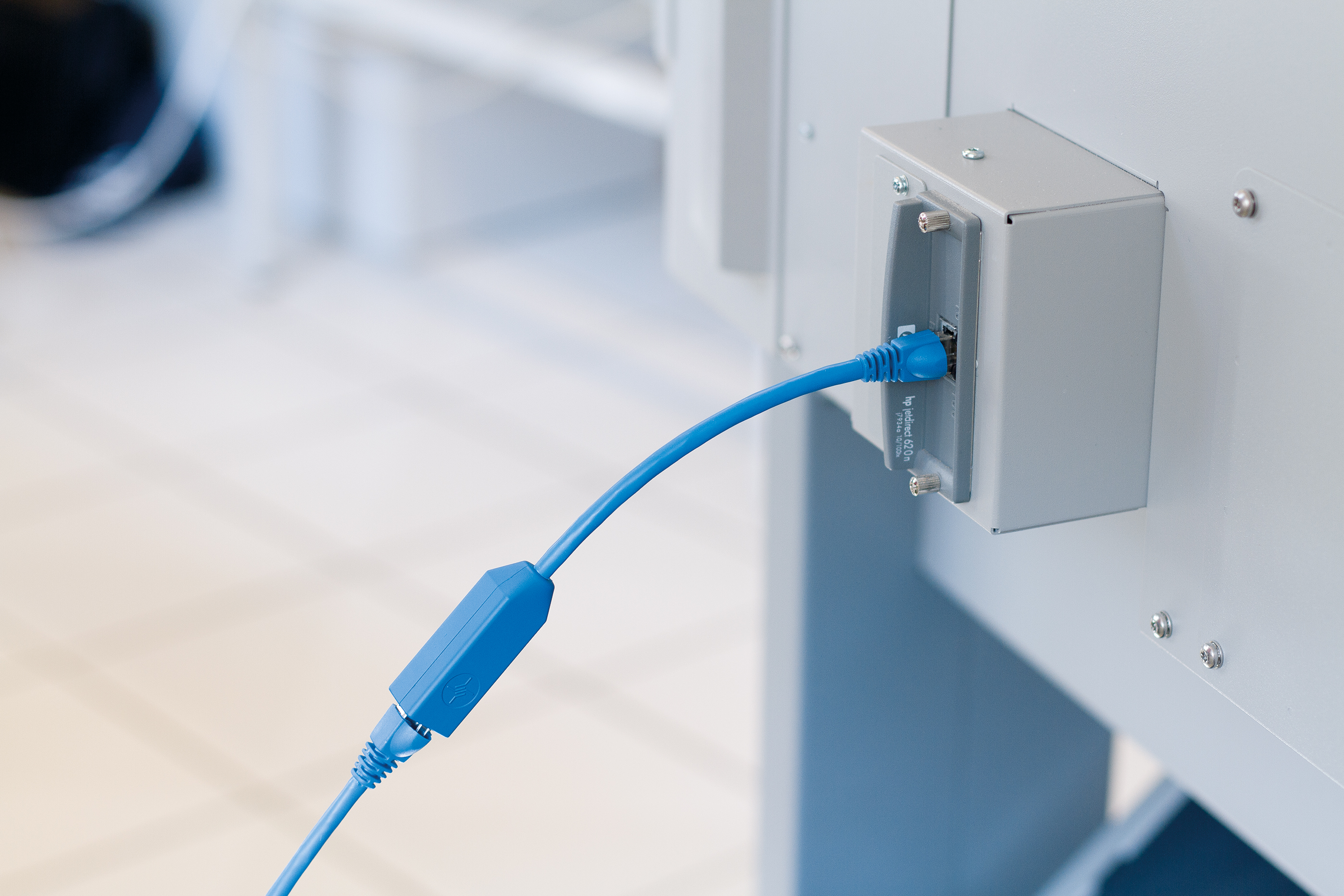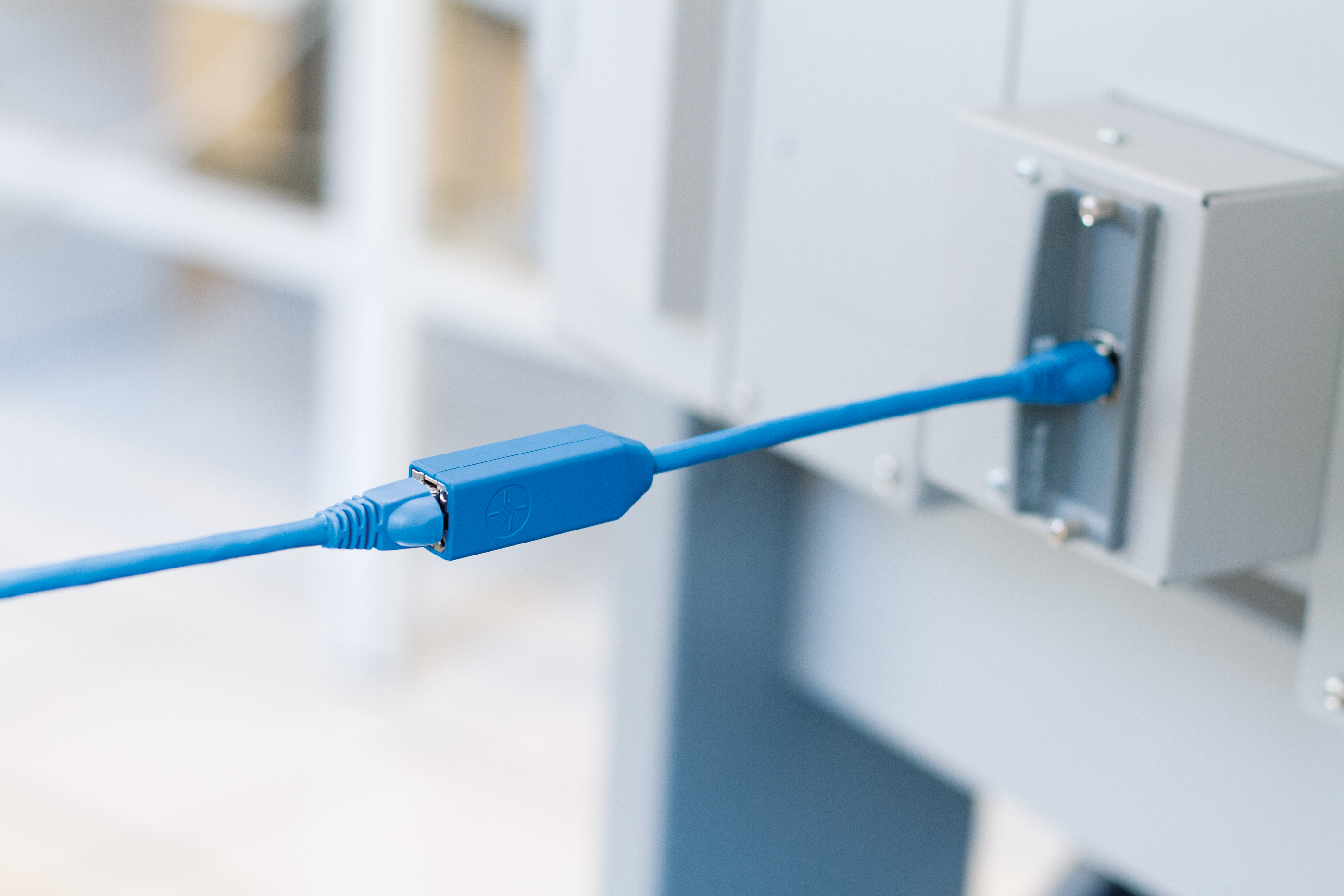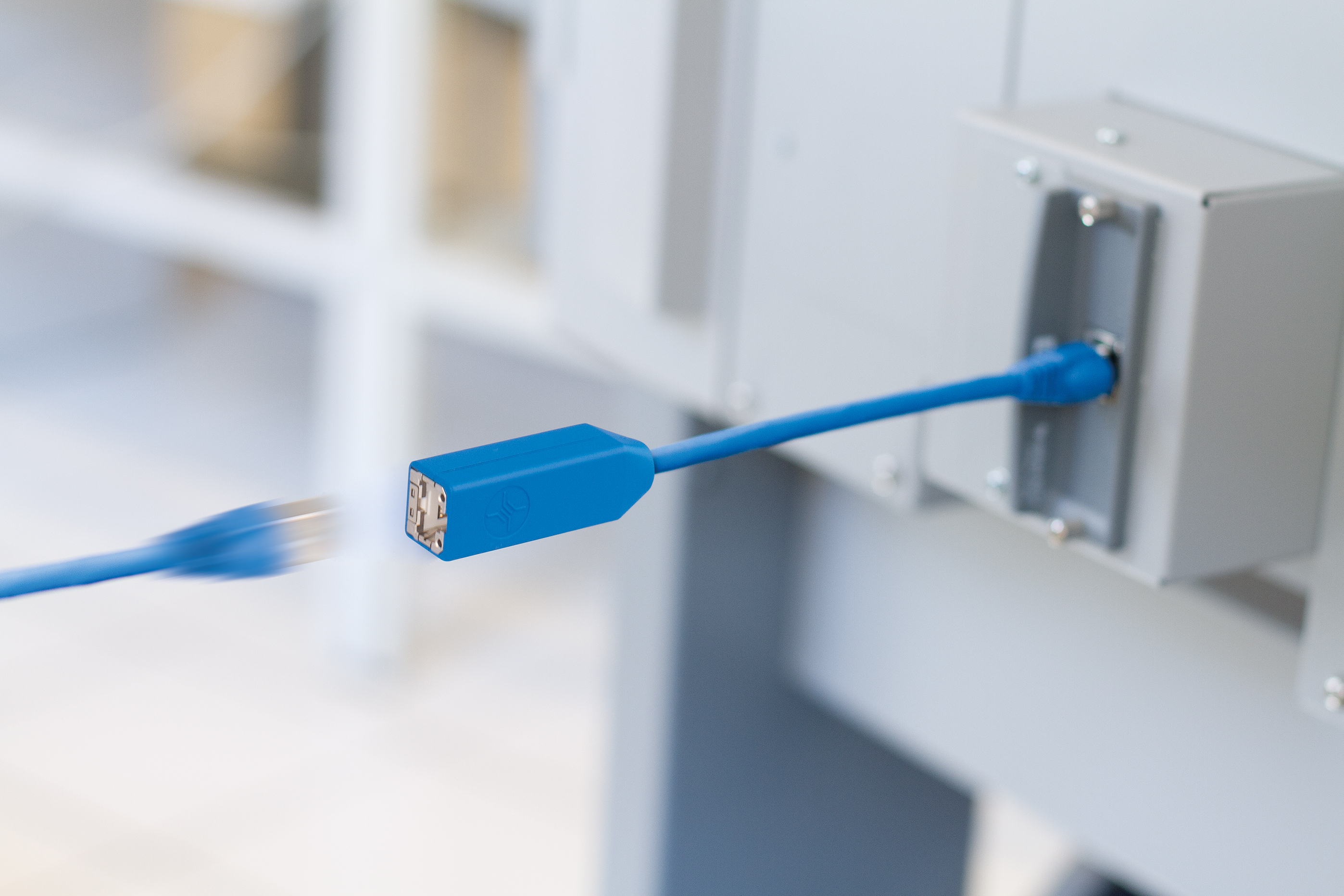Power over Ethernet Plus (PoE+) sets high standards
The RJ45 has been around for over 40 years. Originally intended as a basic plug for telephony services, the humble plug has evolved over the course of time to become the dominant IT connector. Since Power over Ethernet was introduced at the beginning of the twenty-first century, the RJ45 has not only been transmitting data but has also been providing power to the end devices. Given the high electric currents which occur with the present Power over Ethernet Plus (PoE+), the contacts on the RJ45 jack can quickly be damaged. The RJ45 jacks must be designed for PoE+ in order to provide a reliable and safe service otherwise transmission errors can arise and, at worst, complete link failures.
Since the launch of Fast Ethernet with 100 Mbit/s, there have been repeated claims that the RJ45 jack is stretched to its limits. Yet it has continued to perform time and again – with both Gigabit Ethernet and 10 Gigabit Ethernet. 40 Gigabit Ethernet (40GBASE-T) also uses RJ45 interfaces and the cabling standards specify the RJ45 interface for the Category 8.1 connector, ensuring devices and installations are backwards compatible with the billions of existing RJ45 connections.
Remote powering for end devices
Back in the days of the classic analogue telephone network, end devices already received power and voice signals over the same cable. It is similar with Power over Ethernet (PoE) and the more recent variant Power over Ethernet Plus (PoE+) in that the end device is powered over the data cable which offers several advantages:
- There is no need for a separate power cable
- There is no need for a 230 V socket to power the end device
- There is no need for an electrician because the direct current voltage is below 60 V DC
- If the power sourcing equipment is connected to a UPS, all the end devices supplied by them will remain in operation even in the event of a power failure
With PoE+, end devices can be supplied with up to 25.5 W according to the IEEE 802.3at standard. This is not (yet) sufficient to run laptops or printers but it is certainly enough for WLAN access points, IP cameras, scanners on access control and time logging systems, and LCD displays on building automation systems. Even LED lighting systems, which are becoming more and more popular in offices, can run on PoE+. Power over Ethernet with higher power, such as 60 W or 100 W, is currently under discussion.
PoE
Standard: IEEE 802.3af
Year of release: 2003
Power at end device: 13 W
Current per wire pair: 350 mA
PoE+
Standard: IEEE 802.3at
Year of release: 2009
Power at the end device: 25.5 W
Current per wire pair: 600 mA
4PPoE
Standard: IEEE 802.3bt
Release year: 2019
Power at terminal: 51 W (type 3) / 71.3 W (type 4)
Current per wire pair: 600 mA (Type3) / 960 mA (Type 4)

Breakaway sparks damage the contacts
Currents of up to 600 mA per wire pair already flow with PoE+, and up to 1,000 mA are being seriously discussed for future variants. If the plug is unplugged during operation before the end device has been completely switched off, so-called breakaway sparks occur. With PoE+, they are harmless to the user, but the fine contacts of an RJ45 jack are inevitably severely damaged in the process. The effort to replace a jack in a patch panel or junction box is usually time-consuming, expensive and leads to unpleasant interruptions in operation. The relevant standards therefore stipulate that devices should always be switched off before they are unplugged. In a world where end devices are almost always used by non-IT professionals, this is impossible to comply with.
Practical connector technology must therefore be designed in such a way that RJ45 jacks continue to function reliably even if devices are accidentally unplugged under load. With such jacks, the inevitable damage to the contacts occurs at a point that is not used for data transmission.
If devices are unplugged while still being supplied with power via PoE+, breakaway sparks inevitably occur, which damage the fine contacts of the RJ45 jack.
Full network performance with Telegärtner
Sparks will occur when a plug is disconnected during PoE+ operation. The RJ45 jacks designed by Telegärtner are constructed with practicality in mind because the contact-breaking sparks will arise at a point (red) which is far from the point which is used for the data transmission (green). Even after being unplugged several times under load, the Telegärtner jack still offers full network performance.

Jack contacts designed for optimum safety
In jacks designed for improved safety, the top part of the contact which is further inside is used for the data transmission. If the plug slides out of the jack, the point at which the plug and jack contacts touch will move down towards the jack opening. With optimised contacts, the sparks arise in the lower outermost area of the jack contacts. The points damaged by sparks are therefore so far from the section used for the data transmission that they will not affect it. Even if the plug is repeatedly disconnected under load, the jack still offers the full data transfer rate of 10 Gbit/s with Category 6A.
Mechanical requirements
Beside the stricter electrical requirements due to the relatively high currents for Power over Ethernet Plus (PoE+) also the mechanical requirements to an applicable RJ45 connection are increasing.
More and more mobile measuring, presentation and diagnostic devices are being used in medical technology, industry, workshops and meeting rooms. In the rarest cases, they can be sensibly equipped with a WLAN connection. In mobile applications, the RJ45 jacks are subjected to increased mechanical stresses in addition to the breakaway sparks already described. If the devices are moved just a little too far, which can happen quickly in practice, the connecting cable is torn out of the socket. All too often, this damages the device connection, which almost always means high repair costs and long downtimes. At worst, people can still be injured in the process, for example, if someone trips over the tightened connecting cable.
RJ45 jacks with a defined release force provide an effective remedy here. In a so-called defined disconnect CP link (DDCP link for short), such a jack is attached to one end of a short piece of cable that is plugged between the patch cable and the junction box or between the patch cable and the terminal device. If the release force of the socket is exceeded, the plug-in connection is released, as with a safety ski binding, before any damage occurs. Thanks to the flexible cable piece, the solution also works reliably in the event of shear and lateral forces, for example if the end device is moved along the wall.
Protection through DDCP link
When mobile devices are moved too far, the patch cord is torn out of the jack, which nearly always leads to damage. A DDCP link provides effective protection in situations like this. If a defined tension force is exceeded, the RJ45 plug of the patch cord slides out of the jack before damage can occur.
When mobile devices are moved too far, the patch cord is torn out of the jack, which nearly always leads to damage. A DDCP link provides effective protection in situations like this. If a defined tension force is exceeded, the RJ45 plug of the patch cord slides out of the jack before damage can occur.
Built-in contact over-bending protection
Structurally optimised jacks offer even more benefits. For example, the RJ11 or RJ12 plugs of telephones or fax machines are difficult for non-technical people to distinguish from RJ45 plugs at a glance. However, they are narrower, and since the edges of the housing are somewhat higher than the contact tabs, they can over-bend the two outer contacts of the RJ45 jack. Jacks from Telegärtner are effectively protected from this, because they have patented built-in contact over-bending protection. Even if an RJ11 or RJ12 plug is inserted multiple times, these jacks still provide full transmission performance, offering the user the security of an error-tolerant plug connection.
Summary
In today's data networks, RJ45 jacks are exposed to greater stress of more varieties than ever before. Damage from patch cords being torn out of mobile devices, over-bent contacts due to RJ11 and RJ12 plugs and especially disconnection sparks under load in remote powering situations require optimised construction of jacks and their contacts. This is the only way to ensure that cabling works in a fault-tolerant manner to transmit highest data rates safely and reliably for the long term.




